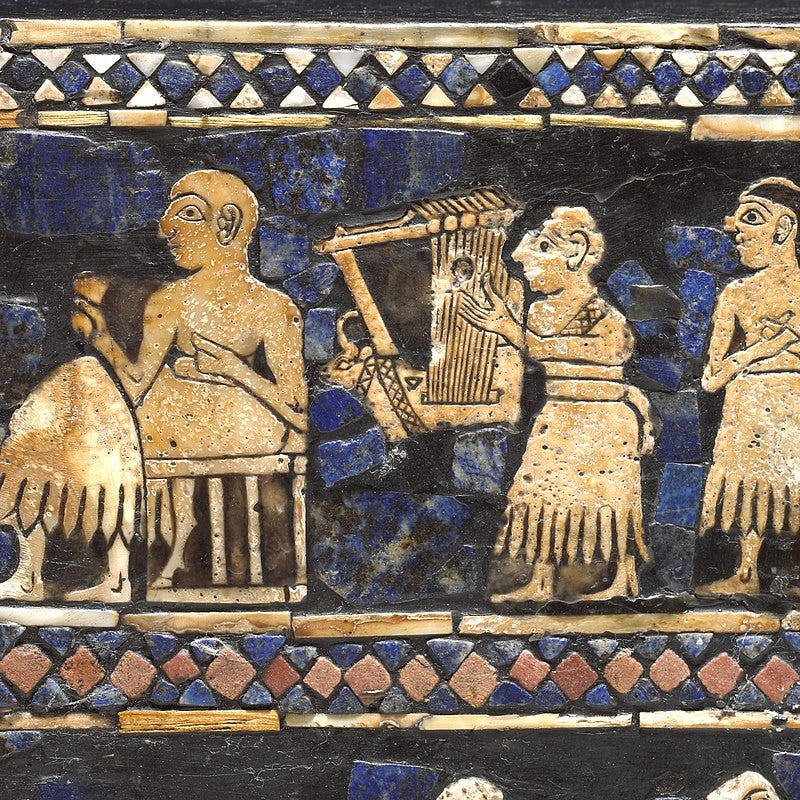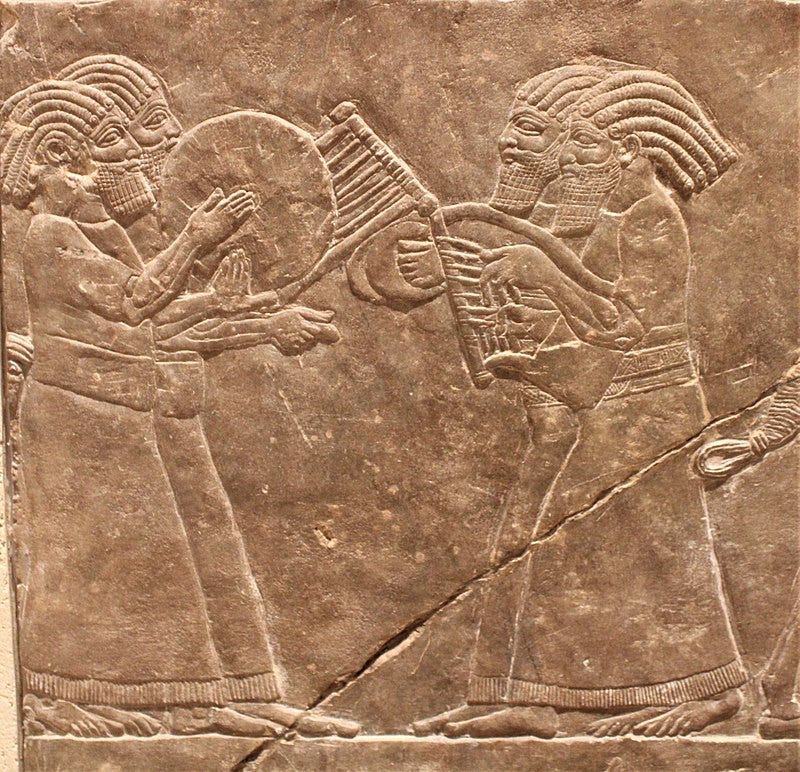Tracing the Melodic Footprints of Syro-Mesopotamian Cultures and Beyond
The Timeless Influence of Music on Civilizations
Music, the timeless expression of human emotions, holds a profound influence over civilizations throughout history. From the ancient Syro-Mesopotamian societies to the vibrant Moorish Spain, the power of music has resonated within the cultural fabric of these remarkable civilizations. Unveiling the fascinating interplay between music and society, we tap into the rich tapestry of melodies that shaped nations and connected souls.
The Birth of Musical Expression
From the earliest civilizations, such as those of Canaan, Phoenicia, Sumer, Akkad, and Ebla, the cultural contributions of music have resonated deeply within societies, carrying messages of emotions, pride, love, and the pursuit of truth and beauty in their most sublime forms.
Delving into the chronicles of history, one discovers that the roots of music and its instruments can be traced back to the ancient times of the Syro-Mesopotamian civilizations. It is through these civilizations that we begin to grasp the profound unity of life within the natural boundaries that distinguished them. The songs that echoed through the ancient world served as poignant reflections of the inhabitants' life cycles, encapsulating their joys, sorrows, and everything in between.
Tracing the Development: Syro-Mesopotamian Civilization

In his seminal work "History Begins at Sumer," S.N. Kramer sheds light on the flourishing literary traditions that thrived in this region long before the Hebrews penned their Bible or the Greeks crafted their legendary epics. He uncovers a rich tapestry of myths, epic poems, hymns, lamentations, proverbs, fables, and essays, all intertwined within the fabric of their societies.
Within the holy temples of Sumer, music took center stage, occupying a pivotal role in both intellectual and spiritual spheres. The priest-musicians developed elaborate liturgies that drew inspiration from the mythological lives of gods such as Ishtar, Tammuz, and Ba’al. Grand religious festivals and ceremonies marked significant occasions, where these divine melodies would echo through the sacred halls, touching the hearts and souls of all who listened.
Epic Tales: Unveiling Ancient Narratives
Among the many epic stories celebrated during the early periods of Sumerian civilization, several have stood the test of time. The "Poem of Creation" reveres King Marduk and begins with a profound verse:
"When the heaven above was not named,
And the sea beneath had no name,
Of Apsu primordial, their father,
And of Tumultuous Tiamat, the all-mother,
The waters mingled in one,
The rush-beds were not fixed; the reed breaks were unseen,
When no god had been named, when no fate was appointed,
The gods they were created."
Another revered epic, the "Gilgamesh," recounts the heroic tale of Gilgamesh of Uruk, depicting his valiant struggles against the fearsome beast Huwawa and the profound bond he forges with his trusted companion, Enkidu. In the words of the epic:
"He who saw everything, of him learn, O my land,
He who knew all the lands, him will I praise.
He saw secret things and obtained knowledge of hidden things,
He brought tidings of the days before the floods,
He went on a long journey, became weary and worn,
He engraved on a tablet of stone all the travail,
He built the wall of Uruk, the enclosure,
Of holy Eanna, the sacred storehouse,
Behold its outer wall, whose brightness is like that of copper!
Yes, look upon its inner wall, which none can equal!"
Music: A Universal Language for All
The influence of music extended beyond the confines of temples and palaces, seeping into the lives of ordinary citizens. In Syria and Mesopotamia, both the aristocracy and commoners reveled in the enchanting melodies that accompanied their festivities. As chronicled in Sumerian texts, the people would dance and celebrate, with sistra rattling in their left hands, the sound of cymbals reverberating through city centers, and the harmonious symphony of panpipes and drums drifting from afar.
To rebuild his palace, the Assyrian King Ashurbanipal I summoned the kings of Arabia. Under their laborious toil, they molded bricks and toiled away while music filled the air, serving as a source of both entertainment and inspiration. The rhythmic melodies ensured harmonious cooperation and divine blessings upon their monumental endeavor.
Women in Music: A Harmonious Presence
In the ancient lands of Mesopotamia and Syria, music knew no gender or class boundaries. Women played vital roles in musical functions, with priestesses and noblewomen alike performing and singing in the temples. Noteworthy examples include the priestesses who held musical duties, such as the mothers of Sargon and Akkad and the mother of Gilgamesh.
A remarkable discovery emerged from the sands of time, unearthing an ancient cuneiform tablet dating back to the Assyrian-Babylonian civilization of 1800 B.C. This tablet, discovered in the Syrian city of Ras Shamra (Ugarit), contained a captivating love ballad. After extensive research and translation efforts by Dr. Anne Kilmer, an Assyriologist from the University of Berkeley, the lyrical message etched on clay tablets began to unfold. To bring this enchanting relic to life, physicist Robert Brown meticulously reconstructed the oldest Sumerian instrument, the lyre, allowing the poignant tones of the love song to resonate once more. Experts noted the rhythmic nature of the piece, drawing parallels to modern-day lullabies. Dr. Richard Crocker, a renowned music historian, eloquently remarked, "The music isn't weird or strange. It's familiar to us because it is, after all, part of our own culture."
Arabic Music's Far-Reaching Influence

With the advancement of the Arab/Islamic reach to the Fertile Crescent, philosophers such as al-Kindi (died about 873 A.D.), who in his treatises discussed the phenomenon of sound, intervals, and compositions; and Abu Nasr al-Farabi (died 950 A.D.), whose Kitab al-Musiqa al-Kabir, The Grand Treatise on Music, discusses the science of sound, intervals, tetrachords, musical instruments, compositions, and the influence of music, added greatly to the science of Arabic music and their musical instruments.
The influence of Arabic music extended far beyond its origins, permeating Western European culture through the historical cross-pollination with Moorish Spain. Arabic musical instruments, such as the lute (derived from al-'ud), kettledrums (from naqqarat), anafil (from al-nafir), and rebec (from rabab), found their place in the Western musical repertoire. Moreover, the contributions of Moorish Spain to Arab music played a pivotal role in the development of the Muwashshah musical form, which embraced romantic subject matters and survived in the Fertile Crescent. Notable modern musicians, including Fairuz and Sabah Fakhri, have carried the notes of Muwashshahat Andalusiah, ensuring its enduring legacy.
A Melodic Journey Through Time
The profound impact of music on the attitudes and lives of people in Syro-Mesopotamia becomes evident through the centuries of development. From the composition of stirring rhythms that kindled nationalist emotions during times of war to the integration of melodic celebrations into the daily lives of the people, music became an inseparable thread in the cultural tapestry.
Amidst great historical and cultural transformations, our connection to our ancestors remains steadfast. Their cultural inventions and contributions, whether the invention of writing systems, numeral systems, or the creation of the first known love songs, have not only advanced civilizations but have also fostered the resilience of our own identity.
As we uncover the melodies of our ancestors and honor their enduring legacy, we come to realize that music transcends time, bridging the gaps between ancient civilizations and our contemporary world. It serves as a testament to our shared humanity, speaking a universal language that unites us all in the symphony of existence.
To explore the fascinating journey of music's development further, the following resources offer profound insights:
Further Reading on the Development of Music
Engel, Carl. The Music of the Most Ancient Nations (New York, N.Y.: Books for Libraries Press, 1970).
Polin, Claire. Music of the Ancient Near East (Westport, Connecticut: Greenwood Press, Publishers, 1954).
Goldron, Romain. Ancient and Oriental Music (H. S. Stuttman Company, Inc., Publishers, 1968).
The Genius of Arab Civilization (Cambridge, Massachusetts: The MIT Press, 1983).




